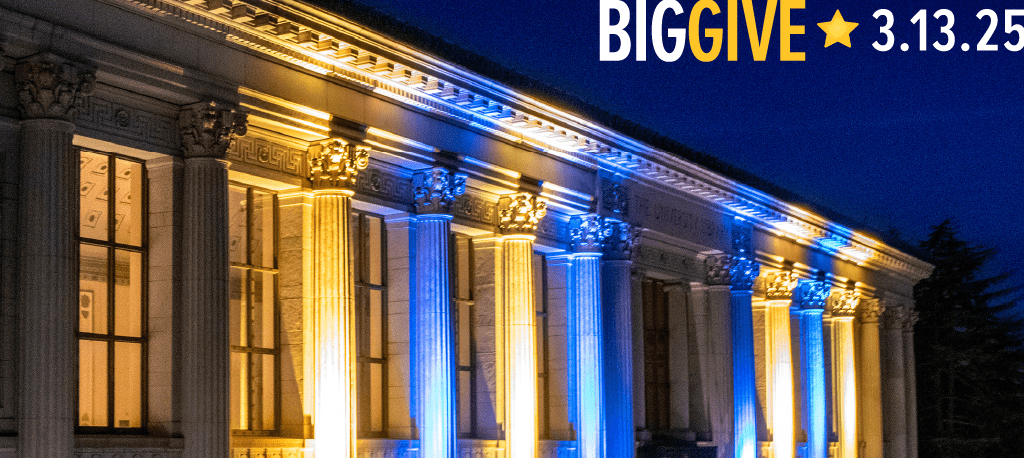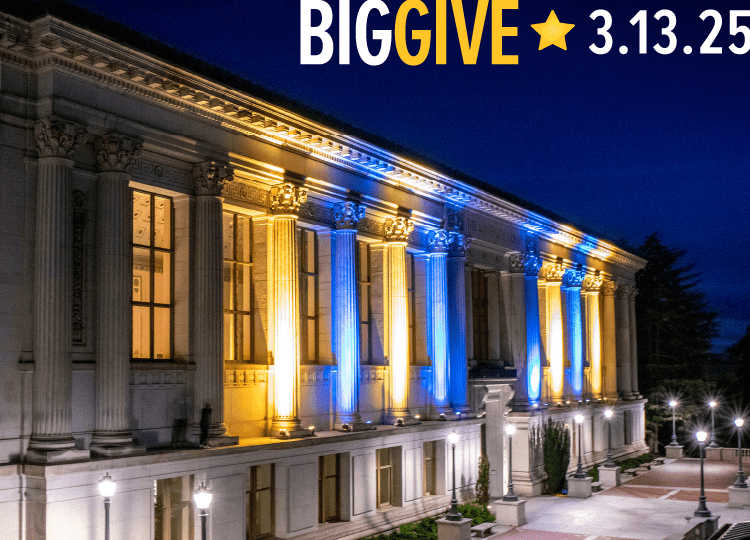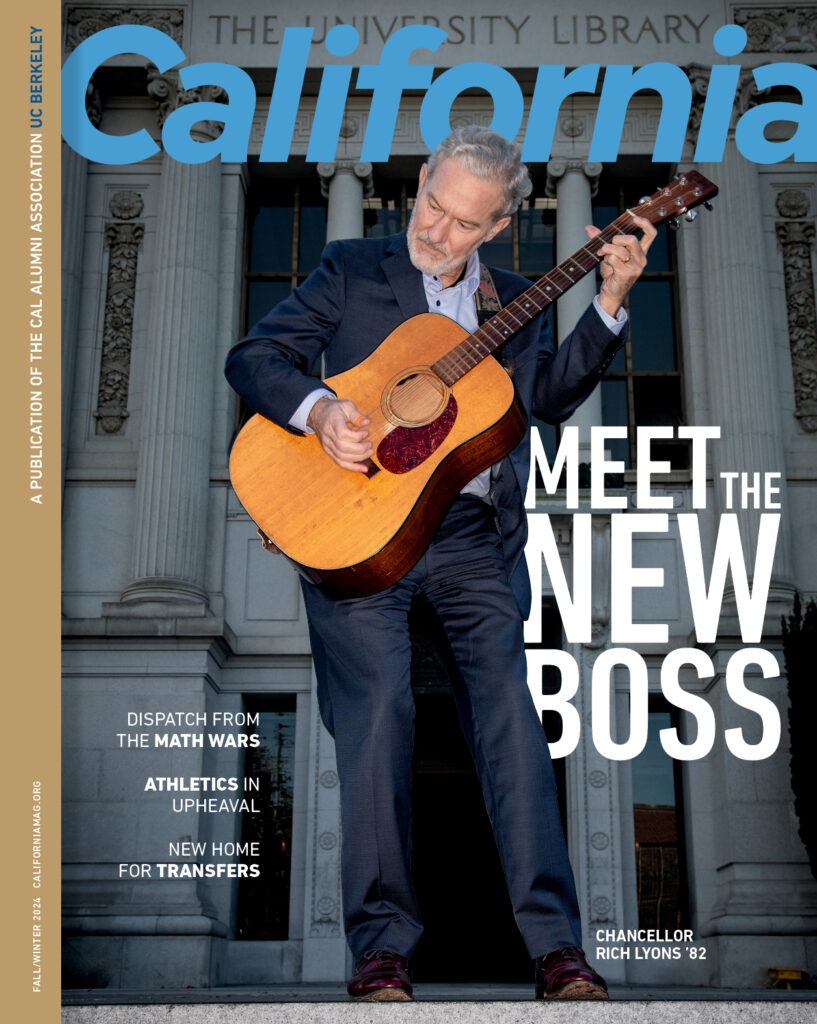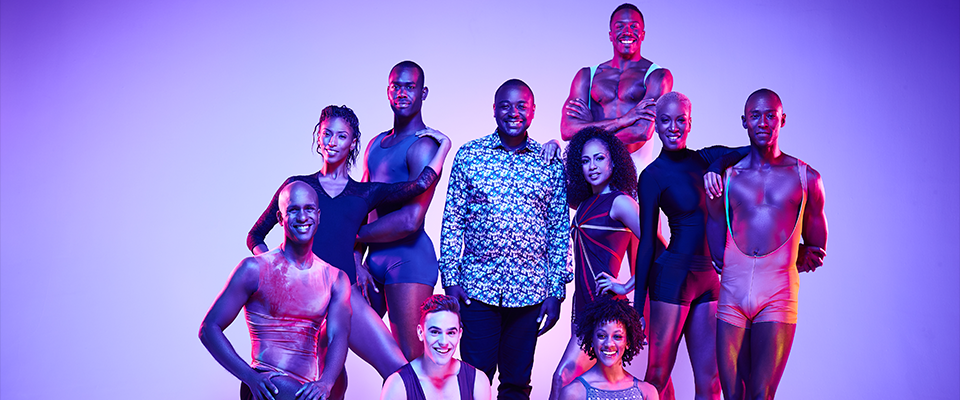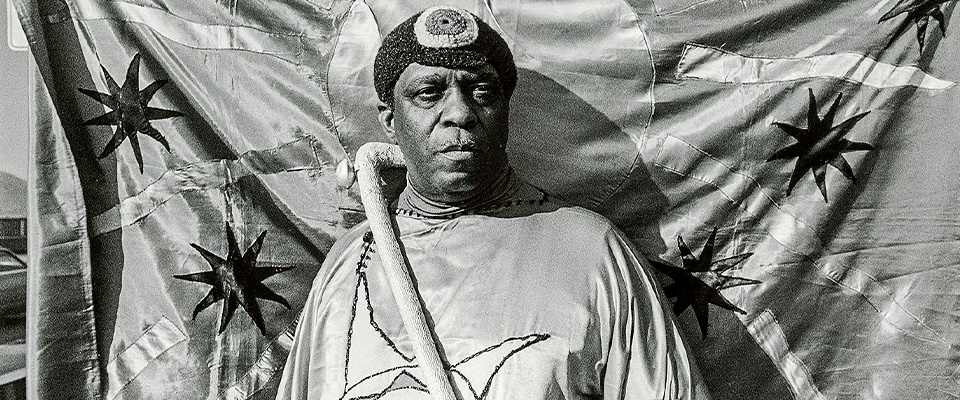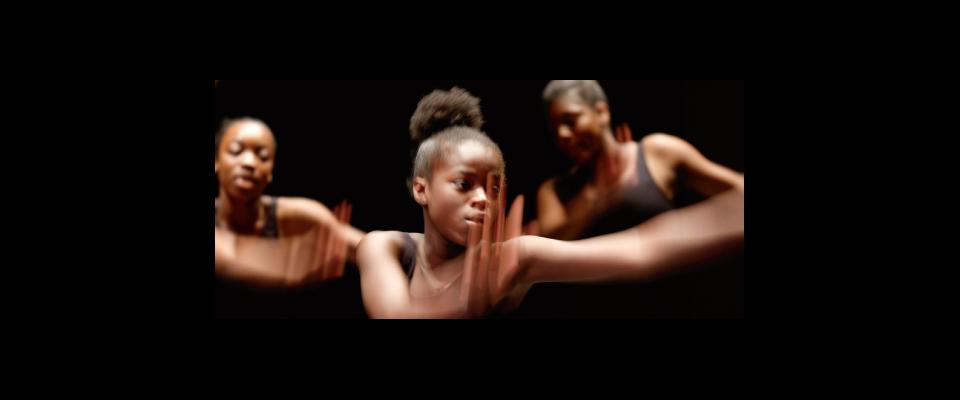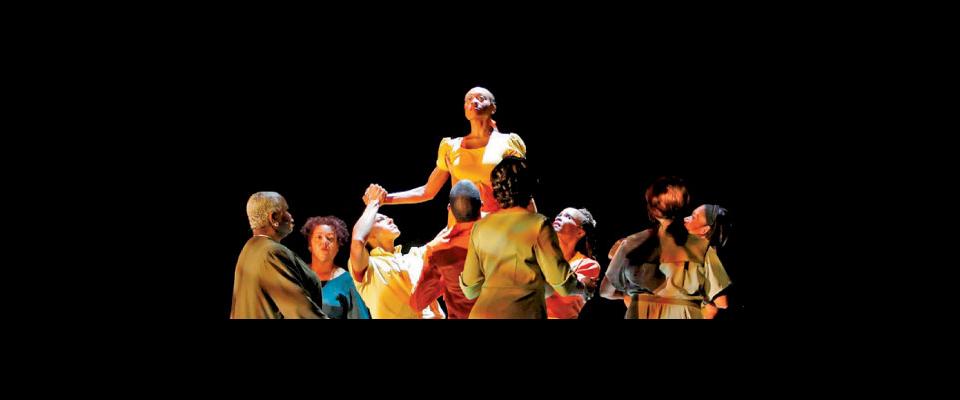When the Alvin Ailey dancers are in the house, Zellerbach can feel more like a church than a theater. When the doors open, the audience members file in like parishioners. Some are regulars, while others are first timers, but when the curtain comes up it doesn’t matter. Young, old, student, professional, black, white, devout, secular, right, left; the differences between them disappear during the rapturous gospel of the Alvin Ailey American Dance Theater.
Alvin Ailey’s “blood memories,” from his childhood informed many of the ballets he created. For him, the church was a safe haven, and through his dances– particularly “Revelations,” Ailey’s signature choreographic work—audiences, some of whom have a shared upbringing, others who don’t, are immersed in a worldview and an aesthetic shaped by his early experiences. His company has for decades traveled the country like evangelists of hope, connecting audiences of all different stripes.
And for 50 years, they’ve never missed an opportunity to come to UC Berkeley.
“I think when the world is turbulent, the arts and culture are much more important,” says Matias Tarnopolsky, executive artistic director of Cal Performances. “It can be a sanctuary from the world around us.”
It is somewhat surprising that the Ailey company found a home at Cal. The campus was known for its progressive ideals, but it was also a hotbed for protests. When the company first arrived on campus, anti-war movements were in full swing: students occupied Sproul Hall, and students were protesting the draft.
Tension around issues of race and segregation were also at a high, not unlike the late 1950s, when Ailey founded dance troupe. The Black Panther Party had recently formed; Berkeley was desegregating schools; Locals would soon be mourning the assassinations of Martin Luther King, Jr. and Black Panther leader, Bobby Hutton.
“[Prejudice] was rampant and therefore comes our classic ‘Revelations’ out of that mire,” says emerita artistic director Judith Jamison. “Our job has been to lift people when they come and make sure they stay lifted when they leave.”
So, it was a perfect time for the company to makes its first trip to campus.
During the first weekend in March in 1968, Ailey dancers took their positions on the Wheeler Hall stage (Zellerbach opened two months later). Audiences filled the hall, including a group of 400 school children on a Sunday performance. All shows nearly sold-out.
“A tremendous energy and also a pristine clarity of dance pattern,” read a San Francisco Examiner review. The Oakland Tribune called them ‘sensational.’ One San Francisco Chronicle reviewer said he would mandate that every school child see an Ailey performance if he was mayor of San Francisco.
“The audience sense[s] what I call spiritual reciprocity. We love them for that,” says Artistic Director Emerita Judith Jamison.
The fact that the Ailey company has performed at Cal for half a century is a feat. In fact, it’s the longest arts relationship in Cal history. The company performs at Zellerbach more than any other place in the world outside of New York City. Jamison says that the company is still thriving in the “afterburn” of Ailey’s passing.
“It’s the deepness of the music of the words of the storytelling, of the affirmations, of the sense of hope; the sense of deviance is crystallized,” Robert Battle, artistic director of the company says of Ailey’s ballets. “There’s something in that testimony I think everybody relates to in their own entry point.”
The late Betty Connors, a UC graduate and the former director of the Committee of Arts and Lectures (the predecessor of Cal Performances) helped facilitate the Ailey residency. Under her tenure she expanded both arts education and performances, and made the University a place where artists could flourish and audiences—particularly students—would flock. It’s a legacy that Tarnopolsky follows.
“We really try to sort of craft an arc that really is showing how the company is developing year after year,” says Tarnopolsky.
In 2015, Cal co-commissioned Awakening, Battle’s first work since becoming artistic director in 2011. Aside from financing the commission, Tarnopolsky and Cal Performances worked with Battle to create this work. “It’s not just business,” says Battle.
Through the AileyCamp, a six-week summer dance camp, and events during their time at Cal, the Cal-Ailey relationship brings art to the community. “[It’s] tremendously important for young people who may not otherwise be exposed to dance and art in that way,” says Battle. AileyCamp is in its 17th year.
And the company loves coming to Berkeley. They’ve seen the campus and the city through its many changes and although they aren’t locals, Jamison says this place feels like home.
“Are they still playing drums outside?” Jamison asks. And she raves about Top Dog, “The best hot dogs in the world.”
When asked what the bond will look like in the future, Battle says that “for a relationship that has lasted 50 years, the proof is in the pudding that we will continue to be expansive and continue to find places where we intersect.”
Jamison seems to agree.
“If we have lasted this long nothing can thwart us. Nothing. Nothing.”
The Alvin Ailey American Dance Theater performs at Zellerbach Hall from April 10-15.


